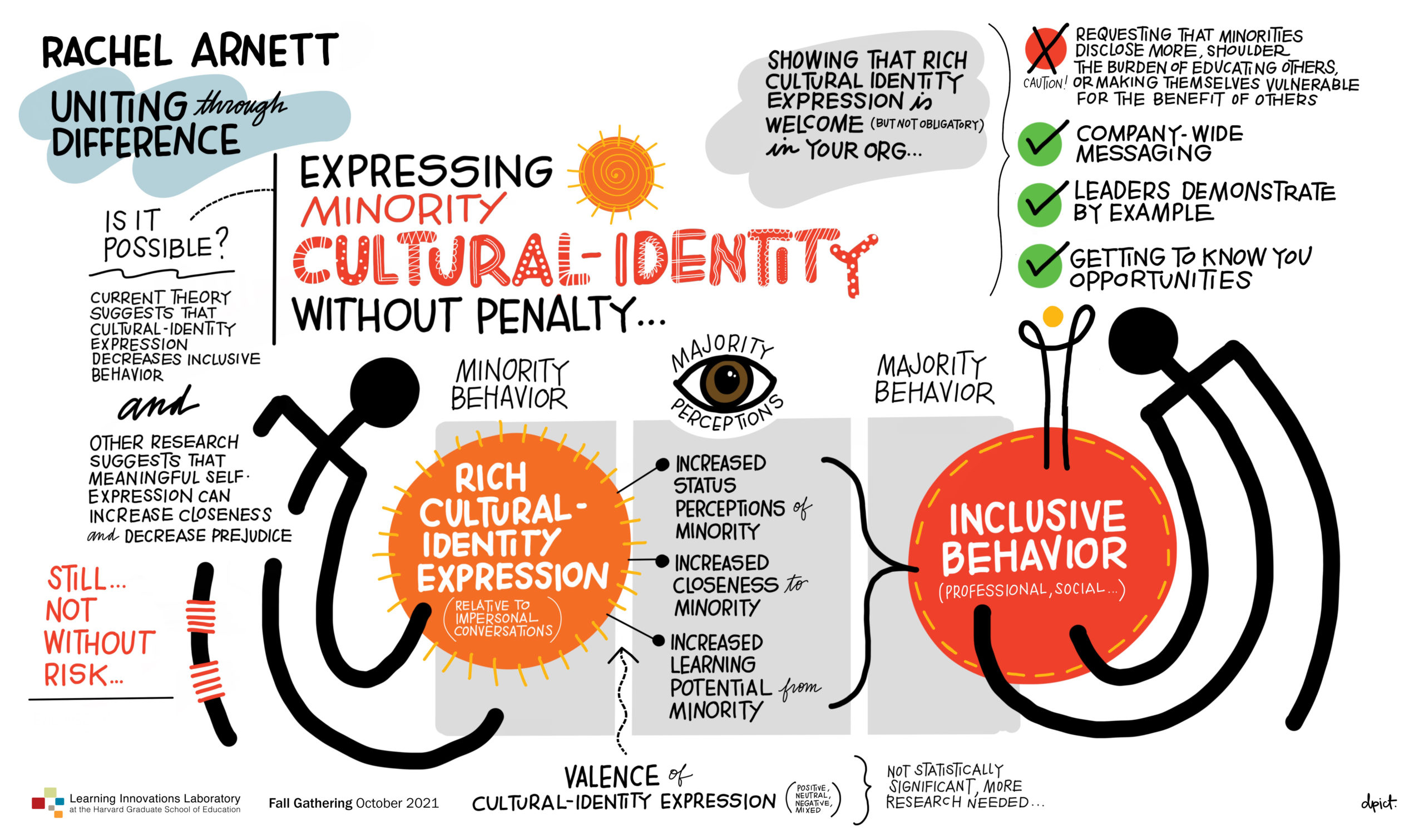 In the first presentation Rachel spoke about the benefits and risks of navigating a minority identity in the workplace. In this presentation she spoke about one way to bring attention to a cultural identity in a way that doesn’t necessarily activate bias and exclusion, and can actually activate and increase inclusion.
In the first presentation Rachel spoke about the benefits and risks of navigating a minority identity in the workplace. In this presentation she spoke about one way to bring attention to a cultural identity in a way that doesn’t necessarily activate bias and exclusion, and can actually activate and increase inclusion.
Rachel investigated what the consequences are bringing attention to cultural identity expression – which she describes as the act of voluntarily bringing attention to one’s race, ethnicity or nationality that provides insight into a person’s inner self, oftentimes their strength, sharing thoughts feelings and less known experiences relating to one’s cultural background. She pointed out that current research suggests that bringing attention to cultural expression often backfires. But much of this research was on surface level cultural expression. Other research suggests that there are benefits to having meaningful and intimate forms of self-expression. When you open up about experiences that you’re having in your life, or maybe difficult emotions that you’re facing at work, these can actually increase feelings of closeness and decrease prejudice in interracial interactions.
In her current work, Rachel tests out the hypothesis that rich cultural identity expression by a minority will increase a majority group employee’s inclusive behaviors towards the minority. There are three reasons why she expects the hypothesis to pan out.
- The first reason that rich cultural expression can increase status perceptions is that it has the ability to disrupt negative stereotypes, and as a result causes you to think more positively of a minority colleague.
- Second – like other forms of self-disclosure, it’s likely to increase feelings of closeness.
- And lastly since rich cultural expression focuses on elements of minority social background which majority group members often don’t have insight into it’s an opportunity for the majority colleagues to learn from their minority group colleagues.
Rachel suggests some ways that organizations can be more inclusive including:
- Showing rich cultural identity expression is welcome but not obligatory
- Establishing company wide messaging
- Having leaders actively demonstrate this by example and
- Providing getting to know you opportunities
She cautions that any organizational approach should not request that minorities disclose more or shoulder the burden of educating others making themselves more vulnerable for the benefit of others .
In closing, Rachel offered some questions for us to reflect on. We are curious what you think. Enter your comments below.
- Are there factors that could make rich cultural-identity expression backfire?
- Has your organization found ways to strike a balance between helping minorities feel more comfortable opening up about their cultural backgrounds if they want to without making it feel like minorities are required to do so to gain acceptance, educate others, or make diversity “work”?
- What can leaders do to make sure minorities are included and given opportunities regardless of whether they open up about their identities?

Add a comment